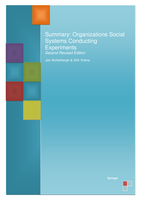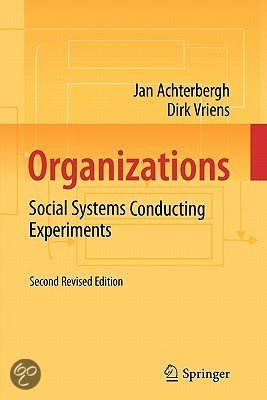Samenvatting
Samenvatting: Organizations Social Systems Conducting Experiments (2nd Revised Edition) - Systeemtheorie
Engelstalige samenvatting van het boek 'Organizations Social Systems Conducting Experiments' (2nd Revised Edition) van Achterbergh en Vriens! Hoofdstuk 1 t/m 9 (incl. de figuren uit het boek)! De perfecte hulp om je tentamen te halen!
[Meer zien]





